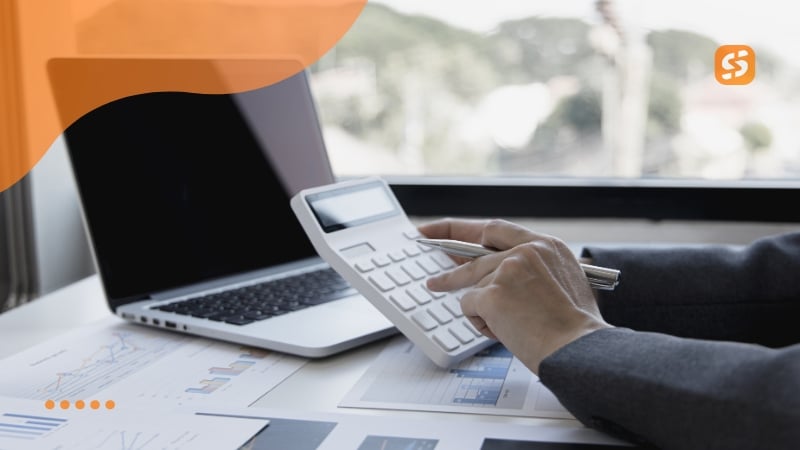Anúncios
Best personal finance software has become a critical tool for anyone looking to gain better control over their money. In a world where digital transactions, subscriptions, and financial goals overlap in increasingly complex ways, relying solely on memory or spreadsheets is no longer sufficient.
Whether you’re trying to reduce debt, save for a house, or simply understand where your money goes each month, having the right digital assistant can make all the difference.
Today, the market offers a wide variety of financial tools, but not all are created equal. Therefore, selecting the best personal finance software is more than just comparing prices, it’s about finding a solution that fits your habits, goals, and level of financial literacy.
With the right software, you can transform money management from a stressful chore into a proactive, empowering routine. Moreover, personal finance software doesn’t just help you track income and expenses, it also plays a pivotal role in fostering financial discipline, planning long-term investments, and identifying opportunities to save.
Anúncios
Why You Need Personal Finance Software
In today’s fast-paced world, managing money is more complicated than ever. Between juggling credit card payments, tracking multiple income streams, and planning for long-term financial goals, it’s easy to lose sight of where your money is going.
That’s precisely why personal finance software is no longer a luxury, it’s a necessity. These tools are designed to help users gain visibility, control, and insight into every aspect of their financial lives.
First and foremost, personal finance software brings all your financial information into one centralized hub. Instead of logging into multiple banking apps or manually recording your expenses, everything is automatically synced and categorized.
As a result, you save time, reduce errors, and eliminate guesswork. Moreover, most platforms offer real-time dashboards, helping you monitor your spending habits, savings goals, and upcoming bills at a glance.
Furthermore, personal finance software plays a vital role in long-term financial planning. For example, many platforms provide features to help users plan for retirement, calculate debt repayment timelines, or monitor investments.
Some even offer insights on the Best Retirement Accounts For Self-Employed, guiding entrepreneurs and freelancers toward optimal savings strategies. In short, these digital tools don’t just manage your day-to-day budget, they help build a roadmap toward financial independence.
Benefits of Using Personal Finance Software
- Consolidates all financial data in one place
- Offers real-time tracking of income, expenses, and investments
- Provides insights through reports and analytics
- Helps in setting and achieving financial goals
- Automates tasks like bill reminders and budget alerts
In short, the right software can save you time, reduce stress, and improve your overall financial well-being.
Key Features to Look For
When choosing the best personal finance software, not all tools are created equal. It’s important to look at features that align with your financial goals and lifestyle.
Must-Have Features
- User-Friendly Interface: Even the most advanced software is useless if it’s too complicated to use. Look for intuitive dashboards and easy navigation.
- Budgeting Tools: A robust budgeting feature should let you categorize expenses, set limits, and track progress automatically.
- Bank Syncing: The best software will link to your bank accounts to automatically import transactions and keep data up-to-date.
- Security Protocols: Since you’ll be entering sensitive data, make sure the software uses bank-level encryption and two-factor authentication.
- Investment Tracking: For those interested in wealth-building, integrated investment tools can help monitor stocks, bonds, mutual funds, and more.
- Multi-Device Accessibility: Whether on mobile, tablet, or desktop, access to your finances should be seamless and synchronized.
Top 5 Options for the Best Personal Finance Software
Let’s dive into the top choices currently dominating the market. Each of these tools offers a unique set of features and pricing to suit different types of users.

1 – Mint – Ideal for Beginners
Mint remains a favorite among personal finance newbies due to its free price tag and intuitive interface. It offers automatic transaction syncing, categorization, and budgeting. Furthermore, it provides free credit score monitoring, which is an added bonus.
- Pros: Free to use, user-friendly, broad bank support
- Cons: Ad-supported, lacks investment depth
Mint is a solid choice if you’re just getting started and want a hassle-free introduction to managing money.
2 – YNAB (You Need A Budget) – Best Personal Finance Software
For those serious about budgeting, YNAB offers a unique approach. Over time, this method improves spending habits and builds financial resilience.
- Pros: Excellent budgeting philosophy, educational resources
- Cons: Monthly fee, steeper learning curve
Although it comes at a cost, YNAB is widely regarded as one of the best personal finance software tools for building long-term habits.
3 – Quicken – Best All-in-One Solution
Quicken has been around for decades, and its latest version is more powerful than ever. It combines budgeting, investment tracking, retirement planning, and even bill payment in one platform.
- Pros: Comprehensive features, detailed reports
- Cons: Desktop-based with limited mobile functionality
Quicken is ideal for users who want total financial control, especially those managing complex financial portfolios.
4 – Personal Capital – Best Personal Finance Software
If your focus is on growing wealth, Personal Capital is a strong contender. While it offers basic budgeting features, its strength lies in its investment and net worth tracking capabilities.
- Pros: Free investment tools, retirement planner
- Cons: Limited budget customization
For those who want both a macro and micro view of their finances, Personal Capital delivers without overwhelming the user.
5 – Monarch Money – Best Personal Finance Software
Monarch Money is a newer entrant in the market but already stands out with its collaborative budgeting features and stunning interface. It allows couples or families to manage shared budgets, making it perfect for joint financial planning.
- Pros: Real-time collaboration, beautiful UI
- Cons: Subscription-based, still evolving
If you’re looking for a modern alternative that blends style with substance, Monarch is worth a look.
Tips to Maximize Your Personal Finance Software
Simply downloading the software isn’t enough. To truly benefit, you’ll need to use it consistently and intelligently.
- Set Clear Financial Goals: Before even inputting your first transaction, define your goals. Do you want to pay off debt, build an emergency fund, or save for retirement? Your goals will shape how you use the software.
- Review Your Finances Weekly: Although most software offers real-time tracking, it’s still beneficial to sit down weekly and review your financial dashboard. This will help catch errors and reinforce good habits.
- Take Advantage of Reports: Most of the best personal finance software tools come with report-generating features. Use these to analyze spending patterns, investment returns, and budget performance.
- Integrate with Other Tools: Many software platforms allow integrations with tax software (like TurboTax), investment platforms (like Robinhood or Vanguard), and even spreadsheet tools for advanced users.
Conclusion
Choosing the best personal finance software in 2025 comes down to your goals, preferences, and willingness to engage with your finances regularly. Whether you’re just starting out with budgeting using Mint, or managing complex assets through Quicken or Personal Capital, there’s a tool that fits your needs.
Ultimately, the best software is the one that helps you achieve financial peace of mind—efficiently, securely, and in a way that complements your lifestyle.
For more financial tools and secure personal finance options, visit the official Consumer Financial Protection Bureau website.



















